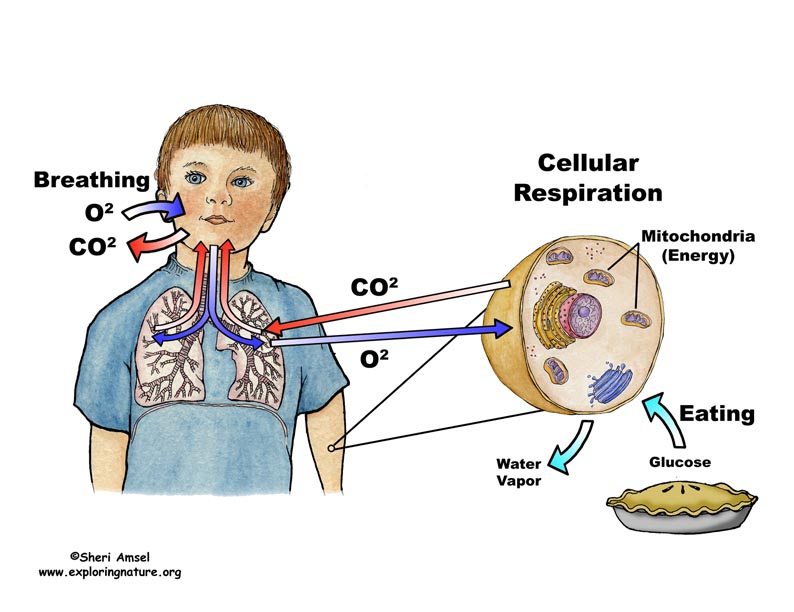
Week 6: Cellular Respiration
Cellular respiration is the process by which organisms combine oxygen with foodstuff molecules, diverting the chemical energy in these substances into life-sustaining activities and discarding, as waste products, carbon dioxide and water. It includes glycolysis, the TCA cycle, and oxidative phosphorylation.
The main product of any cellular respiration is the molecule ATP. This molecule stores the energy released during respiration and allows the cell to transfer this energy to various parts of the cell. ATP is used by a number of cellular components as a source of energy. For example, an enzyme may need energy from ATP to combine two molecules. ATP is also commonly used on transporters, which are proteins that function to move molecules across the cell membrane.
Carbon dioxide is a universal product created by cellular respiration. Typically, carbon dioxide is considered a waste product and must be removed. In an aqueous solution, carbon dioxide creates acidic ions. This can drastically lower the pH of the cell, and eventually will cause normal cellular functions to cease. To avoid this, cells must actively expel carbon dioxide.
Reference:
Master Success Text Book D by Dr. Riaz-ul-Haq Ramay


